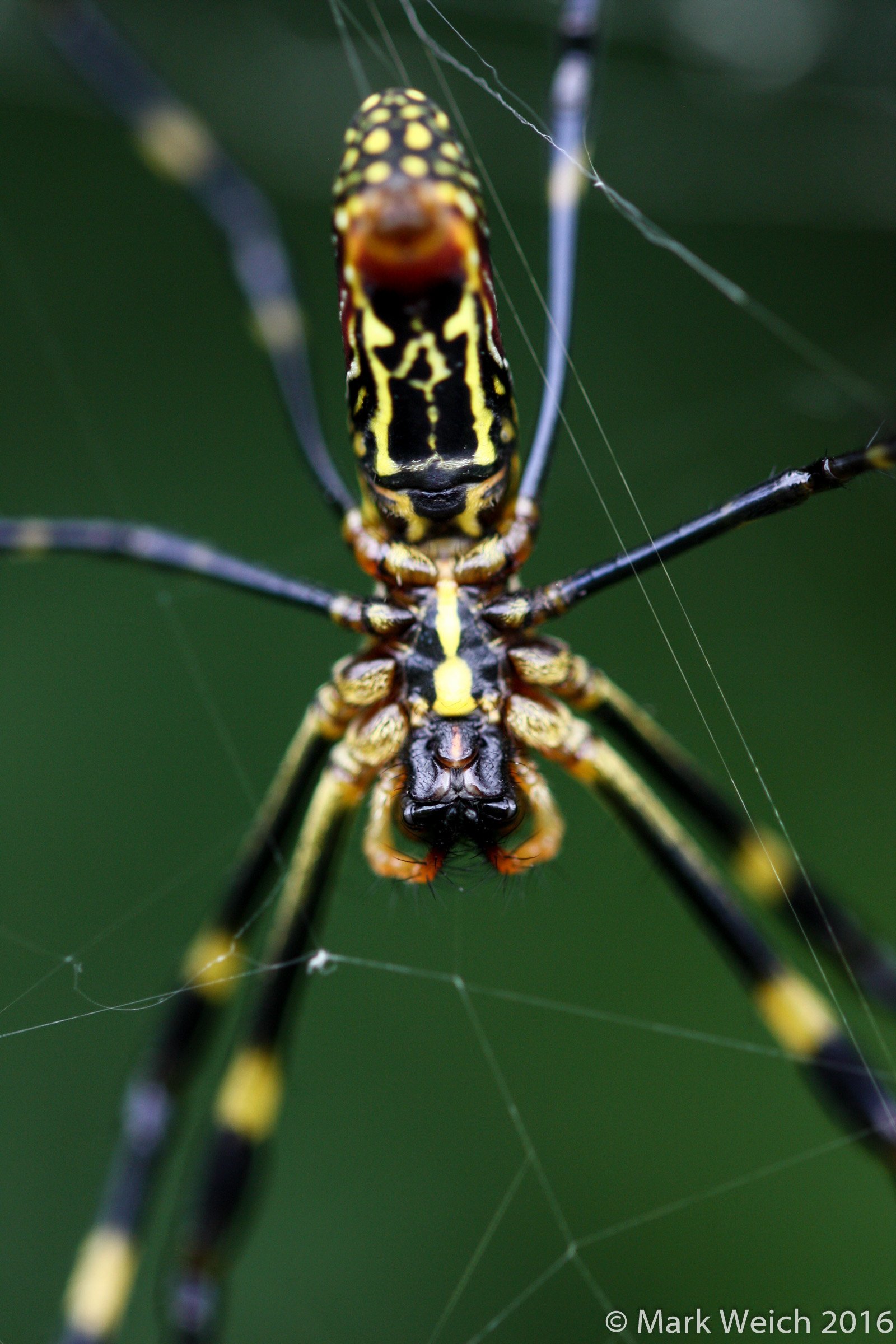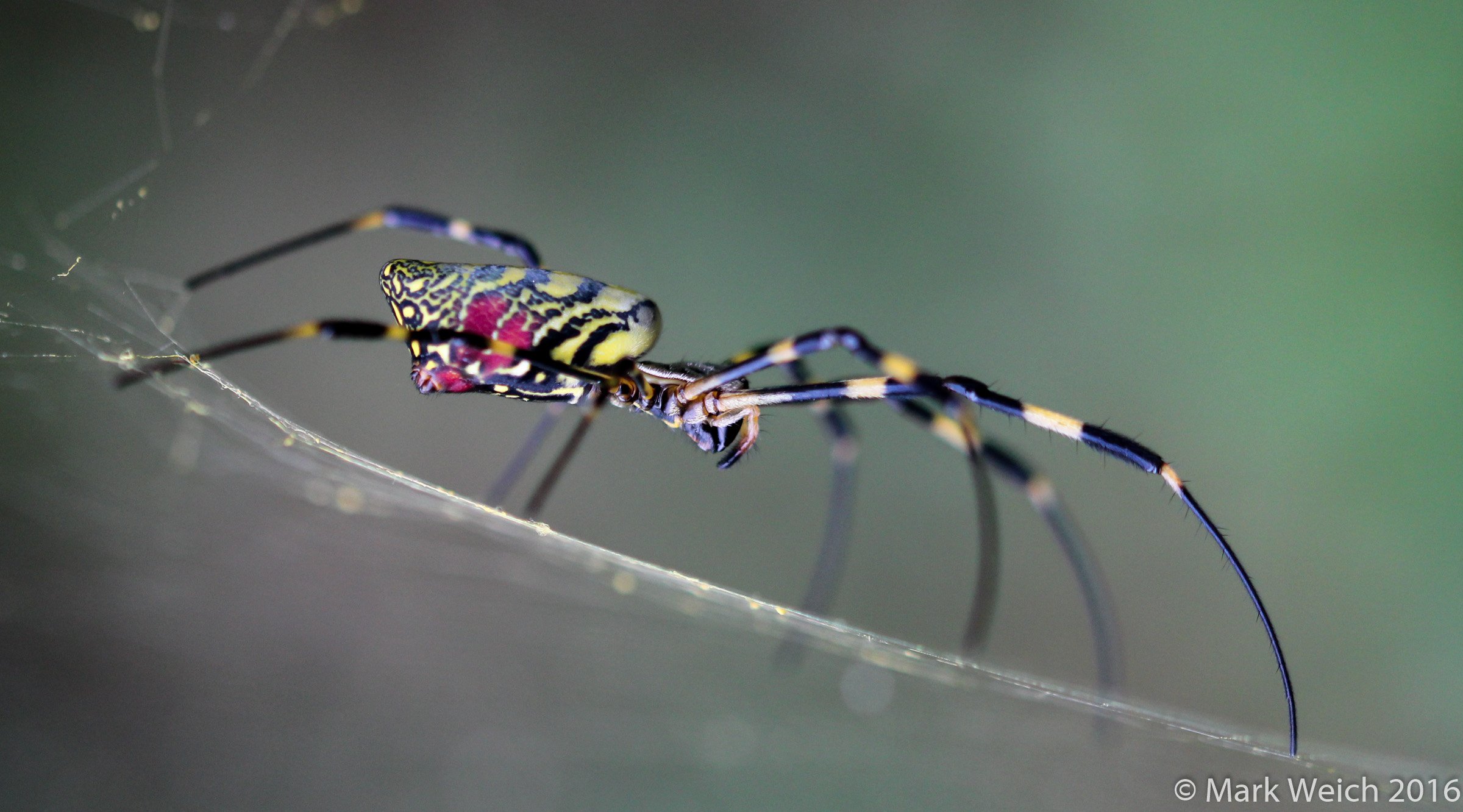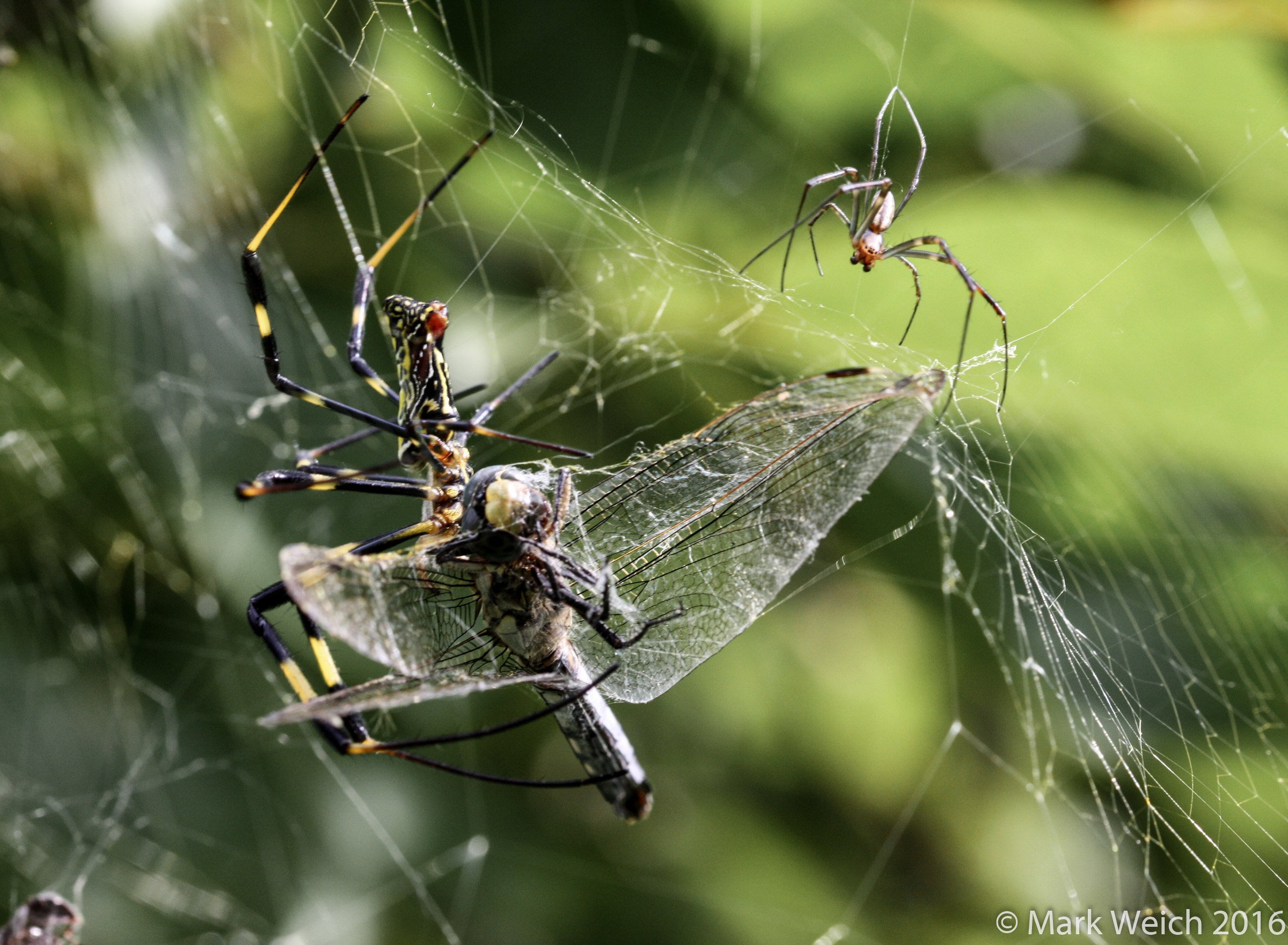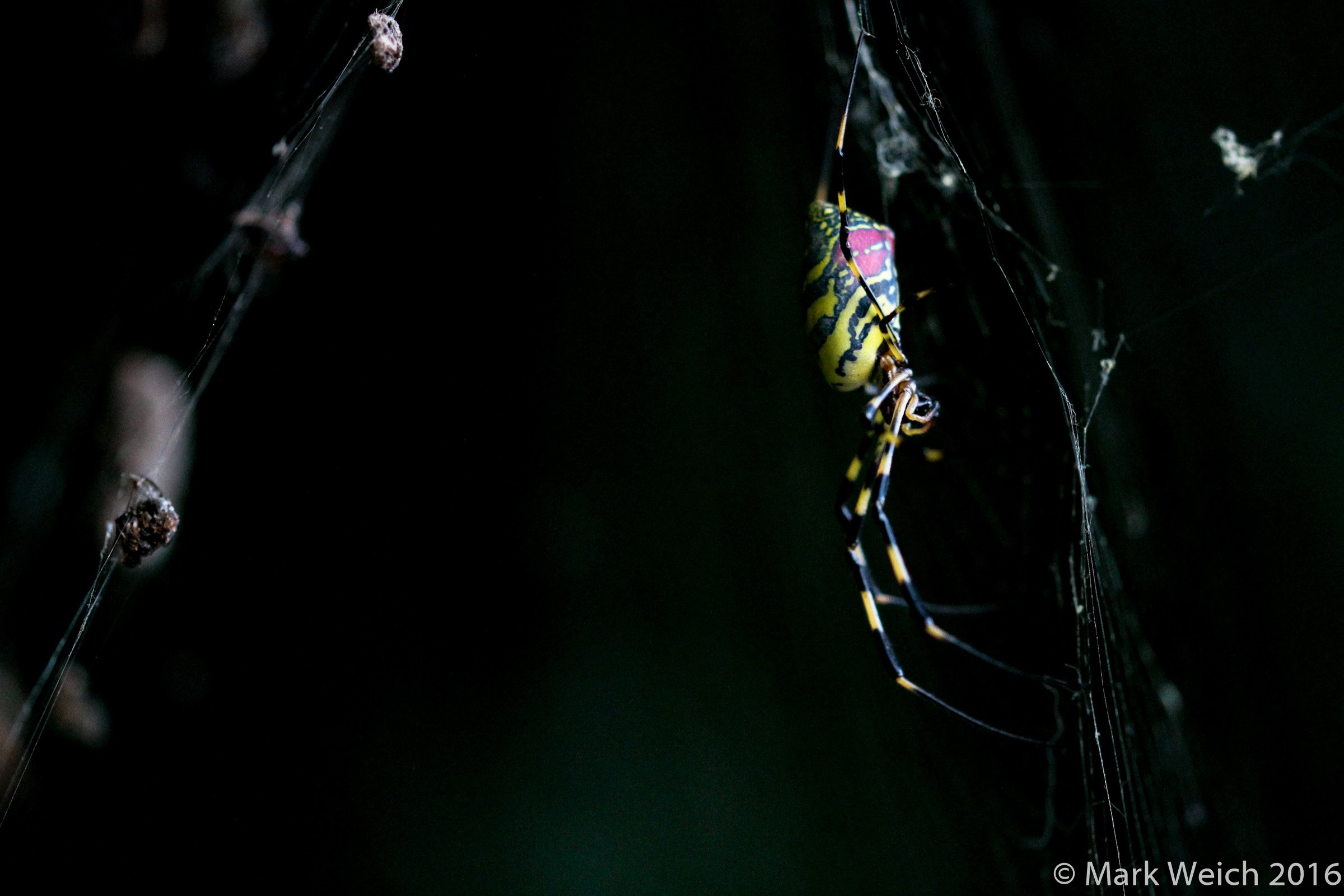The most iconic spider web is the round orb web woven by a diverse group of spiders called Orb Web spiders. Most webs are spun in areas where there would be reasonable flying insect traffic. Typically between tree branches, or stalks of tall grass and to the hiker's delite across trails!
This colourful monster is the Jyoro Gumo (Nephila clavata) or Golden Orb Weaver. The body of the female is about 30mm! with a leg span of about 70-80mm. It is extremely common in Japan, Korea, Taiwan and China. It spins an extremely large web with the circular trap area about 1 meter in diameter! Some of the support lines can be even longer.

I am certain this family of spiders inspired the "Arachnid" alien designs from the Starship Troopers movie:

It's even got the same colours! Click to enlarge!
Like many other species of spider, there is a considerable difference in size between the male, which is much smaller, and the female spiders.
As such, mating can be very perilous for the males.

Click to see what he's up against!
The male is the smaller spider in the top right approaching while the much larger female is feeding on a dragonfly. Yes, that's a regular sized dragonfly. Spiders of the same family have been photographed eating small birds and snakes in Australia.
Another interesting fact about their web. It has three layers, the centre with the classical orb for catching prey and two other, irregular layers that serve to stabilize the web in the wind and as a warning system for the spider should birds, trying to eat the spider, or a bumbling human, bumbling, collide with the web.

Click to enlarge!
An evening sunbeam lends a sinister air to this scene.
Often bits of prey, molts and former suitors are strewn about the web, these decoys further help protect the spider from hungry birds.
Vote and follow to have part III show up in your feed!
Thank you for taking time to appreciate my photography and words about the fantastic small monsters of our world!
Some details are sourced from wikipedia: Nephila clavata
I retain copyright and licensing for all images.
